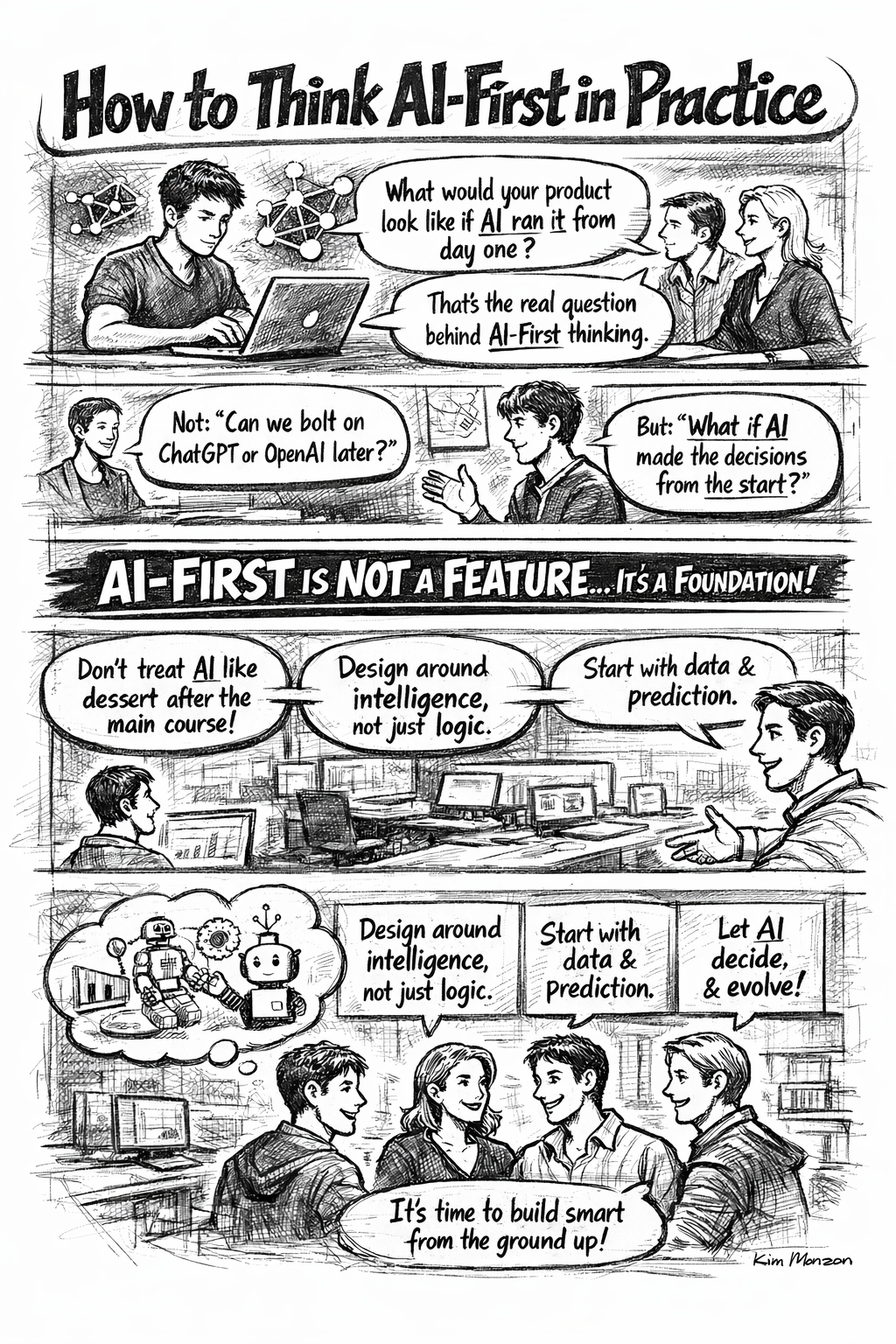How to Think AI-First in Practice

What would your product look like if AI ran it, and your team built it that way from day one?
That’s the real question behind AI-First thinking.
Not: “Can we bolt on ChatGPT, Claude, MCP, OpenAI later?”
But: “What if AI made the decisions, personalized the journey, generated the content, and evolved with every user interaction?”
This isn't about gimmicks or buzzwords. It's a mindset shift, just like Mobile-First or API-First once were. And it's already redefining how the next generation of startups and tools are built.
AI-First Is Not a Feature , It's a Foundation
Too many builders treat AI like dessert, something to add after the main dish is done.
But AI-First flips that. It means:
- You design your product around intelligence, not just logic.
- You start with data and prediction, not just CRUD and validation.
- You let AI decide, guide, generate, and evolve, not just respond.
Examples: AI-First vs “Add AI Later” Thinking
| Problem and Pain | Add-On AI | AI-First Approach |
|---|---|---|
| Learning App | GPT gives summaries of chapters | AI tracks what I know and generates custom lessons for today |
| HR Platform | AI ranks resumes after upload | AI rewrites job posts to attract the best-fit candidates and auto-matches applicants |
| Invoice Tool | GPT reads and extracts invoice data | AI builds the invoice from the email, predicts next invoice timing, and flags anomalies |
| Wellness App | AI gives meditation suggestions | AI senses stress from behavior patterns and proactively guides recovery |
| Blog Writer | GPT generates SEO content | AI tracks your traffic, suggest high-RPM niches, competitors, and trending queries to choose what to write next |
In each case, AI isn't the assistant, it's the starting point.
The AI-First Thinking Checklist
Use this before you build anything.
- What should this system learn over time?
Is there behavior, data(super valuable long-term), or feedback it can use to adapt? - What can be predicted instead of manually configured?
Replace hard rules with patterns. AI thrives on prediction. - What could AI generate or adapt to reduce friction?
Think: smart defaults, dynamic UI, auto-filled content, recommendations. - Can users express their intent in natural language?
Not just keywords,let them talk, type, or describe freely even if they misspelled it.
It’s easier to tell a story than to write a query. - Can this system get smarter the more it’s used?
Is there a feedback loop or fine-tuning that improves outcomes?
If you answer “yes” to two or more...you’re in AI-First territory.
Too Late for AI
A founder I know built a complex dashboard app for compliance tracking.
Tons of manual form inputs. Heavy tables. Reports. Users dropped off.
When they came asking, “Can we add AI to summarize reports?”
The real question should’ve been:
❌ “Why are users filling out forms instead of just describing their compliance goals and letting AI handle the rest?”
By treating AI as a garnish instead of the chef, they missed the transformation.
AI-First is != AI-Everywhere
Not every button needs to be smart -> its cheaper to use native browser components
Not every app needs an LLM but you can build a small one like vector database, Not an LLM, but allows semantic search, RAG, and embedding-based queries
But in 2025 and beyond, if you’re not asking “What would this look like if AI ran it?”, someone else will and their AI-First SaaS might outsmart, outscale, and outcompete yours.
And their version will be:
- More personalized because it understands and adapts to each user
- More scalable because it automates intelligently, not blindly
- More defensible because it learns and improves faster than competitors
- More profitable because it knows what value to add, and what cost to cut
So before you write your next spec, ask:
What would this product do... if it could think?